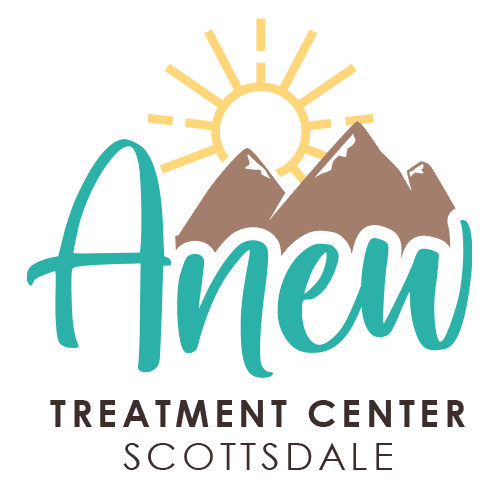Applying Positive Psychology in Recovery
Learn about positive psychology and how it is applied in recovery in this comprehensive article.

What Is Positive Psychology?
Researchers in this branch of psychology have sought to identify the elements of a good life and emphasize meaning, positivity, and deep life satisfaction. Positive psychology focuses on strengths and behaviors that encourage and help people cope and thrive.1

Who Founded Positive Psychology?
The founder of positive psychology was Abraham Maslow, an American psychologist who created the well-known Maslow’s Hierarchy of Needs. While many psychologists of his time were focused on abnormal behaviors, Maslow was interested in understanding how unmet basic human needs could lead to poor psychological health.
Maslow was very interested in treating the person as a whole and focusing on resiliency, positivity, and happiness. Another renowned psychologist in the field of positive psychology, Christopher Peterson, defined positive psychology as the scientific study of what makes life most worth living.
How Is Positive Psychology Different From the Rest of Psychology?
Whereas other branches of psychology focus on weaknesses and problems, positive psychology focuses on the whole person and identifying mental assets and strengths.
Common Uses of Positive Psychology
There are many real-world applications of positive psychology, including increasing people’s happiness, creating positivity on the micro and macro levels, making lives more fulfilling, and helping people, families, and communities thrive.
Levels of Positive Psychology
There are three levels of positive psychology—the subjective level, the individual level, and the group level. These will be detailed below.
Subjective Level
The subjective level focuses on feelings of happiness, well-being, optimism, and similar positive emotions and feelings as they relate to daily experiences. The primary concentration in this level is feeling good as opposed to doing good.
Individual Level
The individual level combines subjective level feelings of well-being with assets that make someone a well-rounded person, such as compassion, love, and courage, and focuses on what makes a “good person.”
Group Level
The group level in positive psychology focuses on positive collaboration with the community and includes traits like self-sacrifice, social concern, and other virtues that reinforce social bonds. An important factor of this level is the development of communities and social responsibility.
Benefits of Positive Psychology
The goal of positive psychology is to encourage a commitment to health, focus on people’s strengths, improve relationships, and minimize the fear of failure.
Encourages a Commitment to Health
When combined with traditional therapy, positive psychology encourages people to commit to their health and improve their situation through various goals.
Focuses on Strengths
One of the many benefits of positive psychology is that it focuses on a person’s strengths as opposed to weaknesses and shortcomings. In our society, we spend a great deal of time trying to find out what is wrong with us. Positive psychology reverses that narrative by shining light on what makes people great.
Improves Relationships
Positive psychology can improve relationships by helping individuals learn how to prioritize positivity and recognize other people’s strengths.
Minimizes Fear of Failure
Positive psychology encourages self-efficacy, owning self-worth, and trusting in oneself. External validation should not, in other words, be the only measure of one’s worth. By focusing on the positive, learning to see the good in negative situations, and developing a strong sense of self, the fear of failure slowly dissipates.2
Positive Psychology and the PERMA model
The PERMA model is part of the well-being theory introduced by Dr. Martin Seligman, a proponent of positive psychology. It consists of five elements that are considered to be the pillars of positive psychology—emotions, engagement, relationship, meaning, and accomplishment.
Positive Emotions
Positive emotions are prime indicators of thriving in life. Positive emotions include hope, gratitude, pride, joy, and interest. Engagement is living in the present moment and focusing on the immediate task at hand.
Positive Relationships
Positive relationships include feeling loved, valued, and supported. Relationships are important in the PERMA model because humans are inherently social creatures and social connections are essential to our happiness.
Meaning
Seeking out meaning is also an inherently human need. Having a purpose in life helps focus energy and time on what is important, especially in the face of adversity or hardship. A recent study found that adults who view their lives as meaningful and worthwhile have a higher sense of well-being and lead more flourishing lives as older adults.3
Accomplishments
Tangible expressions of achievement often boost well-being, whether associated with positive emotion, flow, or meaning. Rising to a challenge and proving ourselves capable of a worthy result is one of the primary reasons we set and pursue goals.

Applying Positive Psychology in Recovery
Positivity helps people concentrate on the aspects of their lives that are going well and provide satisfaction. Positive psychology teaches gratitude in recovery and focuses on what fosters well-being and happiness. This, in turn, allows individuals to move thoughts away from negativity, which can lead to relapse.
Why Is Positive Psychology Important in Recovery?
Positive psychology is important in recovery because it focuses on self-efficacy and positivity. Self-efficacy can help us in recovery because its very essence is how people measure their capabilities—without any outside help from anyone or anything.
This is not to say that someone with self-efficacy does not foster or maintain strong connections with others, just that they see what they want and go for it. People with weak self-efficacy tend to be inflexible, pessimistic, feel fatalistic, and end up feeling depressed and isolated, which are predictors of co-occurring disorders. One study found that positive psychotherapy resulted in a significant decrease in symptoms of depression, a higher rate of treatment retention, and increased remission rates.4
Mental Health Recovery and Positive Psychology at Anew Treatment Center
Traditionally, those with co-occurring disorders are told they have a long-long sickness, will experience multiple relapses, and may result in death, which are incredibly discouraging prognoses to provide. The use of positive psychology in recovery reframes the opportunity to recover into something achievable, empowering and motivating people to keep going and maintain an optimistic mindset.
Positive psychology promotes well-being in mental health services by focusing on positive psychological interventions.5 At Anew Treatment Center, we guide our clients by providing techniques and support throughout the treatment process that encourage positive change in thoughts and behaviors.
Opportunities for Wellness
Contact us at Anew Treatment Center today to learn more about our programs and how to begin your journey to a better quality of life.
Resources
- https://www.psychologytoday.com/us/basics/positive-psychology
- https://positivepsychologynews.com/news/genevieve-douglass/2014071129357
- https://www.cambridge.org/core/books/abs/selfefficacy-in-changing-societies/selfefficacy-and-addictive-behavior/BDDB0FEBB79199EE24B0134CC1F47954
- https://pubmed.ncbi.nlm.nih.gov/25316800/#:~:text=The%20focus%20on%20strengths%20and%20resources%20in%20positive,and%20provide%20an%20evidence%20base%20for%20their%20application.
- https://psycnet.apa.org/doiLanding?doi=10.1037%2F0003-066X.61.8.774
Learn More About Our Treatment Programs
Our team is ready to talk and determine how we can help. Rest assured your call is confidential. We're here for you.


